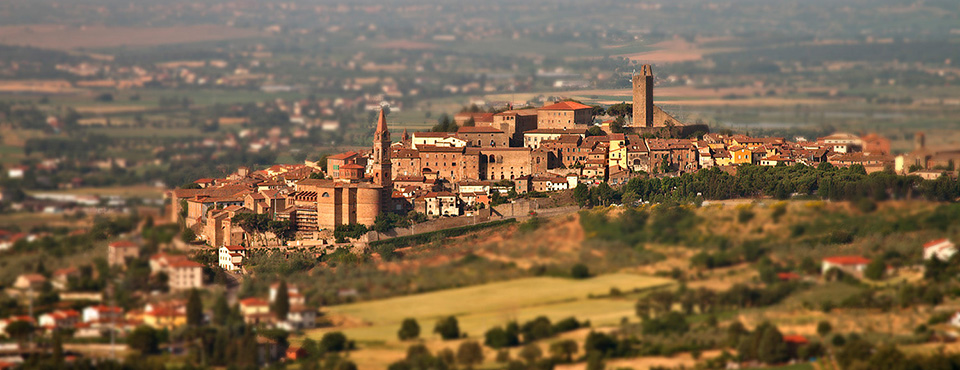
Italian in Tuscany - Local Amenities
Italian in Tuscany is located about two kilometers from the bus-stop for Arezzo or Cortona and the local railway station of Castiglion Fiorentino from which you can easily reach the beautiful towns of Florence (1hour ½), Rome (2 hours), Perugia (40minutes) or Siena, Pisa, Lucca, Montepulciano (40minutes), Lucignano (20minutes), Arezzo (20minutes), Trasimeno Lake (20minutes) and many other famed towns.
CASTIGLION FIORENTINO

Castiglion Fiorentino is a small walled city between Arezzo and Cortona. Strategically nestled on a hill (342 meters) it overlooks the Valdichiana Valley. It was first settled in Etruscan times and gradually grew into an important “ castrum” in the Middle Ages. Dominated by the tall keep tower “Torre del cassero”, it is well known for its Etruscan archeological sites: “The Archeological Museum” hosts many Etruscan findings of notable importance. Castiglion Fiorentino is also very famous for its annual Gastronomical Festivals and Cultural Events. The beautiful “ Palio dei Rioni” on the third Sunday of June is a horse race around Piazza Garibaldi including a colourful display of the ancient custom of flag –waving.
In May do not miss” The Boar Festival” where you can taste delicious boar dishes with good Chianti Wine and lots of friends!
In addition, to the spring poppies, summer sunflowers, the famous Tuscan Cypress and the olive Trees, the beautiful green hillsides and country lanes are a must for all visitors.
In Castiglion Fiorentino there is the Santa Chiara Study Center, where hundreds of American students come from Texas A&M Universitiy and other schools every year for studying mainly Achitecture , Art and the Italian language too.
Nearby visitors can admire “The Montecchio Castle”: a Medieval and well restored castle located on top of a hill which offers a splendid view over the Valdichiana valley.
Last but not the least, Castiglion Fiorentino is the town where Roberto Benigni was born and where the famous movie “ La vita è bella “ was partly shot.
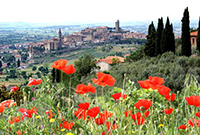
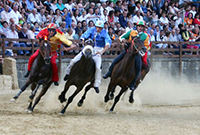

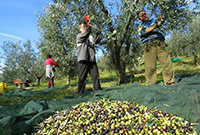
CORTONA
The Etruscan town of Cortona is the main cultural and artistic place after Arezzo.
It is situated on a hillside at an elevation of 600 meters and embraces a wonderful view of the whole Valdichiana. Within its steep narrow streets Cortona hosts “ The Museo dell’Accademia Etrusca “ which contains amazing items of Etruscan and Roman civilizations. The town chief artistic treasures are two panels by Beato Angelico in the “Diocesano Museums”, and works by the artist Luca Signorelli.
Amongst Cortona’s most beautiful churches there is the Sanctuary of Santa Margherita which contains the body of the Saint died in1362. At few steps, “The Medici Fortress “ affords the best view of town and countyside. Visitors can also tour the picturesque hermitage of “ Eremo delle celle” which was founded by Saint Francis in 1211.
During summer time, “The T-bone steak Festival “ (with its 14 square- meters grill ) and “The Porcini Mashrooms Festival” are the most important, gastronomical events in Cortona.
The main cultural Events are “ The Giostra dell’Archidado” and “ Cortona Mix Festival “, an event of music, literature and cinema.
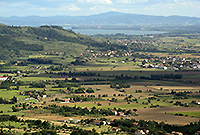
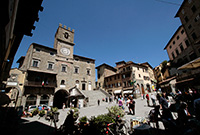
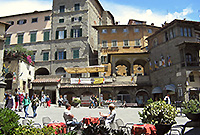
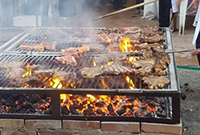
AREZZO
Located in the southeastern Tuscany, it sits atop a hill of the crossroads of four valleys: the Val Tiberina , Casentino, Valdarno and Valdichiana. Arezzo , an Etruscan-Roman town, with its monuments, churches, and Museums ( Piazza Grande, the Medicean Fortress, the Cathedral, the Roman Anphitheater) offers visitors a chance to step back into history. The church of San Francesco is probably the most famous church with its incredible Early Renaissance fresco cycle by Piero della Francesca depicting “ the Legend of the True Cross “. Moreover, do not miss the famous “ Giostra del Saracino” the Medieval tournaments taking over Arezzo in June and September in the beautiful square of Piazza Grande.
Arezzo hosts also one of the most important Antiques market in the country. It takes place every Saturday and Sunday of the month in Piazza Grande and spread over the side alleys filling up the city with collections of old furniture, paintings and Roman coins.

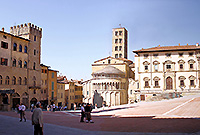


LUCIGNANO
Lucignano , the most extraordinary example of medieval town, is located in a dominant position between Siena and Arezzo. This small village with its elliptical concentric rings, have remained intact over the centuries. The old narrow streets , where you can take a walk, are full of restaurants where you can taste the traditional Tuscan dishes. Do not miss a visit to the Town Museum where you can admire the magnificent “Golden Tree , one of the finest examples of Italian Goldsmith’s Art. In May you can see the “Maggiolata Lucignanese” , an amazing parade of carriages decorated with thousands of flowers making their way in to the town center.
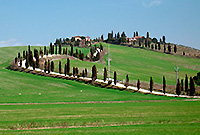


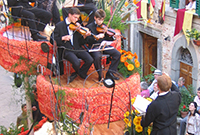
TRASIMENO LAKE
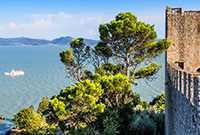
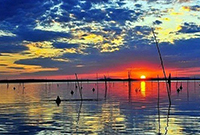
The Lake, ( an area of 128 km2 ), is the fourth for surface in Italy. Historically, the first civilization to inhabit this area was the Etruscans and the famous “Battle of the Trasimeno lake” occurred on the northern shore of the lake in 217BC and it could have been fought near Cortona where there is a place called “ Ossaia” , in Italian meaning “ ossuary”. Trasimeno lake is surrounded by hills, rich in olives and vineyards. The main towns are: Passignano sul Trasimeno, Monte del lago, San Feliciano, Tuoro and Castiglione del lago which has the longest shore. There are three islands in the Lake: the largest is Isola Polvese, Isola Maggiore and Isola Minore.